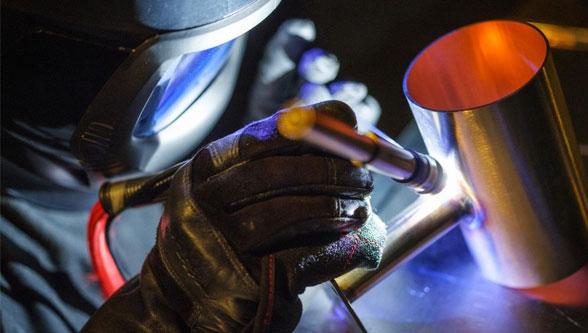When you’re working with sharp items or caustic substances, you’re constantly reminded to use proper personal protective equipment (PPE). You might not even be told why you need to don this equipment — just that it’s required.
One of the most vital but least talked-about types of PPE is gloves. Why is hand protection so important in manufacturing, and how can you use this information to make your workplace safer?
Some Sobering Statistics
We often take our hands for granted. Of course, you expect them both to be there and functional whenever you need them. However, when it comes to workplace safety, the hand is the second most commonly injured body part, according to the Bureau of Labor Statistics. In 2015, more than 143,000 reported hand injuries occurred in the workplace, second only to back injuries.
Experts estimate 20% of disabling workplace accidents involve the hands. What would you do if you lost one or both of your hands in a work accident? While you might learn to adapt, it would no doubt dramatically impact both your life and your ability to work. That’s why hand protection is so important — because you only have two hands, and if you lose them, your entire life will change.
A worker is injured every seven seconds in the United States. Using proper hand protection can prevent you from becoming one of these sobering statistics.
Improvements in PPE Technology
Gloves used in the manufacturing industry used to be uncomfortable and bulky, interfering with manual dexterity and making it difficult to get the job done. Now, improvements in PPE technology have made it easier to work with gloves on, regardless of your field or material preference.
Industry experts have seen steady growth in orders for hand protection, from impact-resistant leather to nitrile-coated knit gloves that resist cuts and even improve grip and dexterity. Even medical professionals, who use gloves daily, are upgrading their hand protection to gloves that are cut- and puncture-resistant to prevent accidental needle sticks.
Making Your Workplace Safer
We’ve created a culture that considers gloves a necessary evil to be avoided whenever possible. How can you change that attitude to make your workplace safer?
- Talk to your employees: Start by talking to the workers on the floor of your manufacturing plant. See what types of gloves and personal protective equipment they would prefer. If you can find a vendor who will bring samples, let your team members try on different types of gloves to see what works best for them.
- Make comfort a priority: No one is going to want to be safe in the workplace if it means wearing uncomfortable, ill-fitting gloves that interfere with their ability to do their job. If you’ve built a team of professionals, they likely already have a favorite type or brand of personal protective equipment. Listen to them. You might learn something.
- Emphasize workplace safety: Take the time to create a safety culture within your facility. Make workplace safety everyone’s responsibility, from the CEO to the newest trainee. Make sure you’re leading by example through using gloves and other PPE whenever you’re on the production floor.
- Encourage employee feedback: Encourage communication and maintain an open-door policy. If you’re not on the production floor every day, you may not see every safety issue that occurs. Keeping your door open — either physically or metaphorically — gives your team the tools to bring these issues to your attention without fear of repercussion. Your crew can be your eyes and ears on the floor if you’re willing to listen.
- Implement a safety program: Consider starting a workplace safety incentive program. These programs were controversial for years until OSHA finally clarified their stance on the matter, stating business owners are allowed and even encouraged to set up incentive programs to keep their teams safer. Set up bonuses or rewards — monetary or otherwise — for accident-free months or quarters to promote your crew’s safety and protection on the job.
Looking Toward the Future
Gloves aren’t there to make your job harder. Hand protection in the workplace prevents potentially disabling accidents from leaving you without one or both of your hands. Understand the importance of hand protection — and make sure your team does as well.
It may take some trial and error to find the best hand protection for your specific manufacturing plant. Take the time to listen to your team. Find out what works and what doesn’t, and make safety everyone’s a priority. It’s easy to take our hands for granted — they’ve been there since we were born, after all — but their protection is paramount in your and your workers’ health and wellbeing.
Article by —

Megan Ray Nichols
Freelance Science Writer
[email protected]
www.schooledbyscience.com/about

